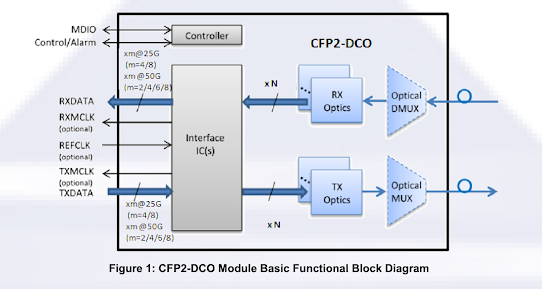OSNR in DWDM Networks
Introduction:
DWDM is a technology that combines large number of independent information carrying wavelengths onto the same fiber and thereby increases the transmission capacity of fiber. The “spectral bands” where the optical fiber and the transmission equipment can operate more efficiently are specified by ITU-T as O, E, S, C, L and U bands (from 1260 nm to 1675 nm). While setting up the transmission link, there is a need to ensure that the signal can be retrieved intelligibly at the receiving end. This can be done preferably by using optical amplifiers that serve as the key component of a DWDM system. When the signal is amplified by the optical amplifier (OA), like EDFA, its optical signal to noise ratio (OSNR) is reduced, and this is the primary reason to have limited number of OAs in a network. One of the mitigation is to use RAMAN amplifier but it also has some intrinsic noise, though it is less than that of EDFA.
The OSNR values that matter the most are at the receiver, because a low OSNR value means that the receiver will probably not detect or recover the signal. The OSNR limit is one of the key parameters that determine how far a wavelength can travel prior to regeneration. OSNR serves as a benchmark indicator for the assessment of performance of optical transmission systems. DWDM networks need to operate above their OSNR limit to ensure error – free
operation. There exists a direct relationship between OSNR and bit error rate (BER), where BER is the ultimate value to measure the quality of a transmission. Given the OSNR, the empirical formula to calculate BER for single fiber is:
Log10 (BER) = 10.7-1.45 (OSNR)
Significance of OSNR:
In DWDM links a rule of thumb would be to target an OSNR value greater
than 15 dB to 18 dB at the receiver. OSNR requirements depend on:
Location:
The required OSNR will be different for different locations in the light path. The OSNR
requirement will be higher closer to the transmitter and lower closer to the receiver. This is
because optical amplifiers and reconfigurable add/drop modules (ROADMs) add noise,
which means that the OSNR value degrades after going through each optical amplifier or
ROADM. To ensure that the OSNR value is high enough for proper detection at the receiver,
the number of optical amplifiers and ROADMs needs to be considered when designing a
network.
Type of Network:
For a metro network, an OSNR value of >40 dB at the transmitter
might be perfectly acceptable, because there are not many amps between the transmitter and
the receiver. For a submarine network, the OSNR requirements at the transmitter are much
higher.
Data Rate:
With the increase in the data rate for a specific modulation format, the OSNR requirement also increases.
Target BER:
A lower target BER calls for a higher OSNR value


Comments
Post a Comment